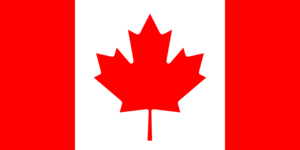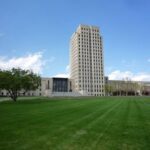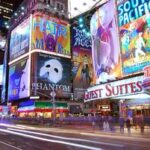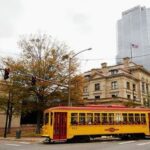Americans have been traveling en masse to Canada for generations. Our neighbors to the North provide a viable respite for the typical United States hustle and bustle. Although Canada is noted for its relatively sparse population density, outdoorsman ship, and natural beauty, the enormous nation also offers cosmopolitan civic centers at Montreal, Toronto, and Vancouver.
Obviously, English is the dominant language spoken in all provinces outside of Quebec. Today, the Canadian Dollar to U.S. exchange rate hugs parity, or the 1:1 zone. The U.S. – Canada travel and commercial set-up is arguably the most important international arrangement in the Universe.
Despite our extensive list of shared history and friendly ties, the September 11th terrorist strikes have changed the game, somewhat. Americans seeking to drive to Canada are now required to arrive equipped with the proper directives to facilitate travel across the border.
This important guide is set to articulate these particular directions and requirements for Americans to drive to Canada from the United States. In summary, U.S. drivers will need a passport, reasons for visit, and directions to the important Port of Entries at Washington – British Columbia, Detroit – Windsor, Niagara Falls, and Upstate New York – Quebec.
Remember, Canada pledges allegiance to the metric system. One kilometer is .6214 miles (1 mile = 1.61 km) and one gallon translates into 3.785 liters (.26 gallons = 1 liter). The kilometer / mile and gallon / liter conversion is of particular importance to U.S. drivers buying gasoline in liters and navigating Canadian road signs in kilometers.
Driving to Canada: Directions to Canada
United States West Coast to Vancouver, British Columbia: Americans will access The 5 Freeway from Southern California and the Pacific Northwest to the Port of Entry at Blaine, Washington. The 101 – Pacific Coast Highway also provides access to Victoria – Vancouver Island, British Columbia from a tolled ferry across the Strait of Juan de Fuca at Port Angeles, WA.
The 5 Freeway transitions into BC 99, which leads directly into downtown Vancouver as a surface level street thoroughfare.
United States Midwest – Gulf Coast to Windsor – Toronto, Ontario: Americans will drive to Detroit, Michigan via I-75, 94, and 96. The Detroit signage is simple, yet effective and reads “Bridge to Canada” or “Tunnel to Canada” from the I-75 / 96 approach and downtown Detroit. Out-of-town travelers into Detroit should span the Ambassador Bridge to avoid the tunnel bottlenecks. Americans will actually travel south to enter Canada from Detroit.
Huron Church / Talbot Road and Ouellette Avenue will funnel traffic onto The 401 / Macdonald – Cartier Freeway (King’s Highway) East. 401 is acknowledged as the most heavily trafficked road in the Universe and connects the United States to Toronto and Montreal.
Toronto is 237 miles away from Windsor, Ontario.
United States East Coast – Atlantic South to Ontario – Quebec, Canada: New Yorkers and East Coast drivers will hit I-87 / Major Deegan from The Bronx to the Thruway for Albany. I-87 carries traffic to the Port of Entry at Champlain, NY, with direct access to Montreal, Quebec via Quebec 15.
Meanwhile, the I-90 Thruway connects the Eastern Seaboard to Ontario via Buffalo, NY. Americans will skirt the congestion by wrapping the 290 / Youngmann Expressway around Buffalo to I-190 and the Niagara crossing, which transitions onto Ontario 405 and Queen Elizabeth Way for Toronto.
Toronto is 90 miles from Niagara Falls.
Driving to Canada: What You Will Need to Cross the Border into Canada
U.S. Passport: Americans must present a valid U.S. Passport Book or Passport Card at the Canadian checkpoints across the border. The U.S. passport is secured by submitting an application, along with the proper forms of identification, photographs, and fees (expect to pay $115 for application and photos) to the various acceptance facilities at Boston, Chicago, Aurora (Denver), Honolulu, Houston, Los Angeles, Miami, New Orleans, New York, Norwalk, CT, Philadelphia, San Francisco, Seattle, and Washington.
Designated employees at authorized post offices may also receive applications and the processing time requires 4-6 weeks. Rushmypassport.com does offer same-day service for $135.
Contact Your Bank and Cellular Phone Company Prior to Canada Travel: United States travelers must take care to contact the customer service departments of their banking and mobile phone institutions to mitigate confusion.
The bank must be made aware of your travel plans to avoid the risk of all accounts being shut down per fraud protection. Obviously, several withdrawals from Montreal based ATM’s is a red flag for fraud and banks will freeze accounts without notice. Secondly, smart travels will look to convert greenbacks for Canadian dollars at home to avoid fees that range from 3-5% per transaction total across the border.
Per cellular phone use, I would recommend that Americans reserve the telephone appendage for pure emergency in Canada. For example, Verizon Wireless charges 69-cent per minute roaming fees in the True North.
Reason for Travel to Canada: Passenger and commercial vehicle traffic is open to interrogation and search at the border to prevent terrorist and smuggling activity. All motorists must remain prepared to answer questions concerning reason for travel, dates, destinations, and the timing for return back into the States. The border crossing is a serious matter and Americans must not crack jokes at the Port of Entry.
Always remember to represent the Stars and Stripes well and with pride, internationally.
Driving to Canada: What You Will Need to Cross the Border into Canada, Sources:
Government of Canada, http://canada.gc.ca/home.html
United States Government, http://www.usa.gov/
U.S. State Department Passport Home, http://travel.state.gov/passport/passport_1738.html







